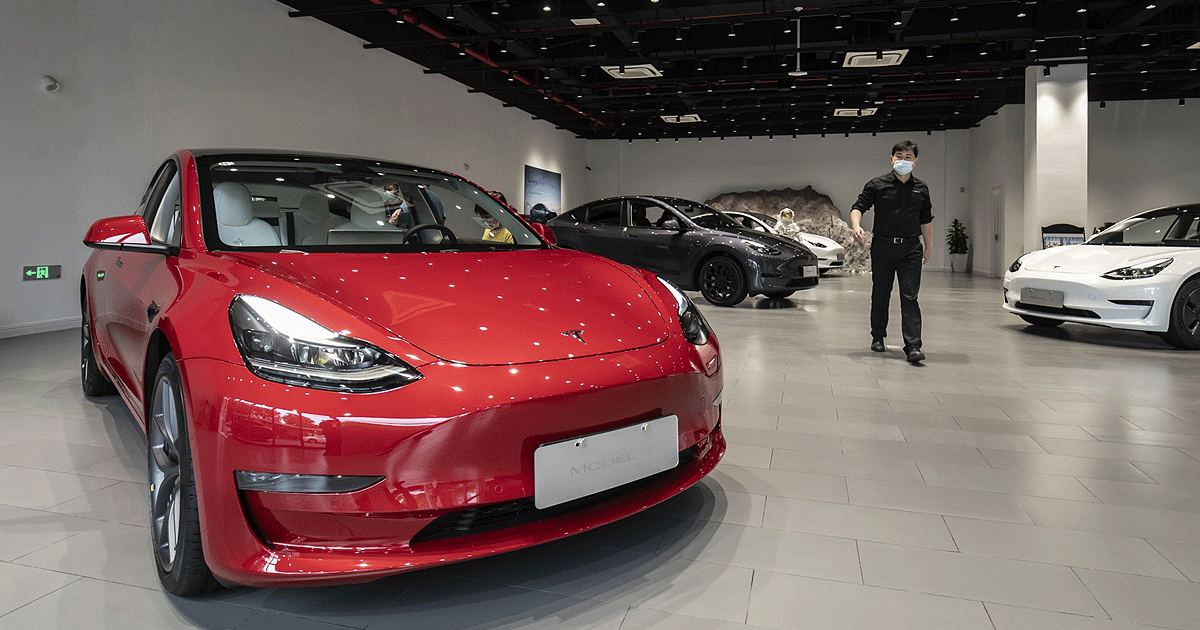
SHANGHAI – Tesla cut electric vehicle prices in China for the second time in less than three months on Friday, stoking expectations for a wider price war for battery-powered vehicles in the world’s largest auto market where demand has weakened.
Tesla also cut prices on its best-selling Model Y and Model 3 EVs in Japan, South Korea and Australia.
The coordinated cuts were part of an effort to help stoke demand for Tesla’s output at its Shanghai factory, the company’s single largest production hub, according to a person with direct knowledge of the plan.
It was also the first major move by the electric vehicle maker since Tesla appointed its lead executive for China and Asia, Tom Zhu, who has been based in Shanghai, to oversee global output and deliveries.
Tesla shares slid in premarket trading after the price cuts.
Established automakers have long turned to incentives in the face of weaker demand to control inventory, but, until late last year, Tesla had been able to keep prices steady – or even to push them higher – because of a strong pipeline of orders from consumers.
Last month, Musk said “radical interest rate changes” had affected the affordability of all vehicle, new and used, and that Tesla could lower pricing to sustain volume growth.
The latest cut in China, along with a price cut in October and incentives extended to Chinese buyers over the past three months, mean a 13 percent to 24 percent reduction in Tesla’s prices from September in its second-largest market after the United States, according to Reuters calculations.
On Friday, Tesla slashed prices for all versions of the Model 3 and Model Y in China by between 6 percent to 13.5 percent, according to Reuters calculations based on the prices shown on its website. The starting price for Model 3, for instance, was cut to 229,900 yuan ($33,427) from 265,900 yuan.
Grace Tao, Tesla’s vice president in charge of external communications in China, posted on her Weibo social media account on Friday that Tesla’s price cuts in China reflected engineering innovation and “answer the government’s call to promote economic development and encourage consumption.”
Deliveries of Tesla’s China-made EVs hit their lowest in five months in December.
The cuts came just days after Beijing ended a subsidy program that helped build the world’s largest EV market. Softening demand has forced Tesla and its rivals to absorb the brunt of that decision.
China Merchants Bank International, which warned in July that China’s EV sector was headed for a price war, said Tesla’s latest price cuts affirmed that prediction, adding that the U.S. automaker may have to do more, especially as competition with Chinese rivals intensifies.
“Tesla needs to further cut prices and expand its sales network in China’s lower-tier cities amid ageing models,” said CMBI analyst Shi Ji.
“We expect new EV production capacity in China to outpace new demand in 2023 and Tesla Shanghai’s capacity utilisation could drop to about or even below 80 percent this year if its Berlin plant ramps up.”
Tesla’s Shanghai plant, which was expanded last year, also exports vehicles to Europe. There was no immediate indication of price cuts by the EV maker in those markets.
But Sun Shaojun, a popular China auto blogger, said on Weibo that the Tesla price cuts were so large that other automakers, including Tesla’s larger rival BYD would be forced to respond in that market.
BYD recently raised the prices for its best-selling models after the government subsidy program expired at year end.
After Friday’s price cut, Tesla’s Model 3 was the equivalent of about $1,000 more expensive that BYD’s Seal, a model launched in July. The Model 3 is now the same price as BYD’s best-selling Han EV.
BYD declined to comment on pricing by competitors but said it would adjust its own pricing according to changes in market demand.
BYD, which sells both plug-in and pure electric vehicles, saw its retail sales in China double in December while Tesla’s fell 42 percent, according to data from CMBI.
Some Tesla owners in China who took delivery in recent months and did not qualify for the reduced prices said on Friday that they planned protests at the automaker’s showrooms in Shenzhen and Henan, according to screenshots of social media chats seen by Reuters.
Tesla did not offer any additional comment when contacted by Reuters. A Tesla spokesperson referred Reuters to Tao’s Weibo post.
The China prices of the Model 3 and Model Y are now 24 percent to 32 percent lower than those in the United States, Tesla’s largest market, Reuters calculations showed, reflecting a range of factors including different material and labour costs.
Tesla also cut the prices of Model 3 and Model Y cars by about 10 percent each in Japan, the first time it had done so since 2021.
In the United States, the Model Y and Model 3 are eligible for up to $7,500 in clean vehicle tax credits as of this month under the terms of the Biden administration’s Inflation Reduction Act, which became law in August.
In 2021, China accounted for just over a third of Tesla’s overall sales.